
New releases
A smarter, simpler Attentive
Explore new features →
Explore new features →

For marketers around the world, 2023 is the year of getting back to basics. With a drive to maximize budget and an eye on results, marketing this year can be summarized in one word: performance.
At the same time, brand-to-consumer communication continues to evolve, becoming more and more conversational. There are a few factors driving this change: Mobile devices are becoming ubiquitous across the globe, and consumers want marketing and brand messaging to fit into their day-to-day lives. Consumers prefer to communicate via SMS, and it’s the channel through which marketers can deliver measurable performance (especially revenue).
We surveyed over 900 brands across global markets and analyzed more than 25 billion messages sends, across 850,000+ unique messages to understand how marketers are using SMS today and what good (and great) performance looks like. Using this data, we’ve created benchmarks for campaigns, journeys, and conversational journeys across a variety of message types and 13 verticals.
For all the data, you can access the full SMS Marketing Benchmarks in the 2023 Global State of Conversational Commerce Report. Let’s jump into the highlights.
Marketers’ top goals for 2023 reflect a return to basic marketing functions that drive results: 74% are focusing on retaining existing customers by building loyalty, and 73% on acquiring new customers. Building their brand is a distant third, at 38%.
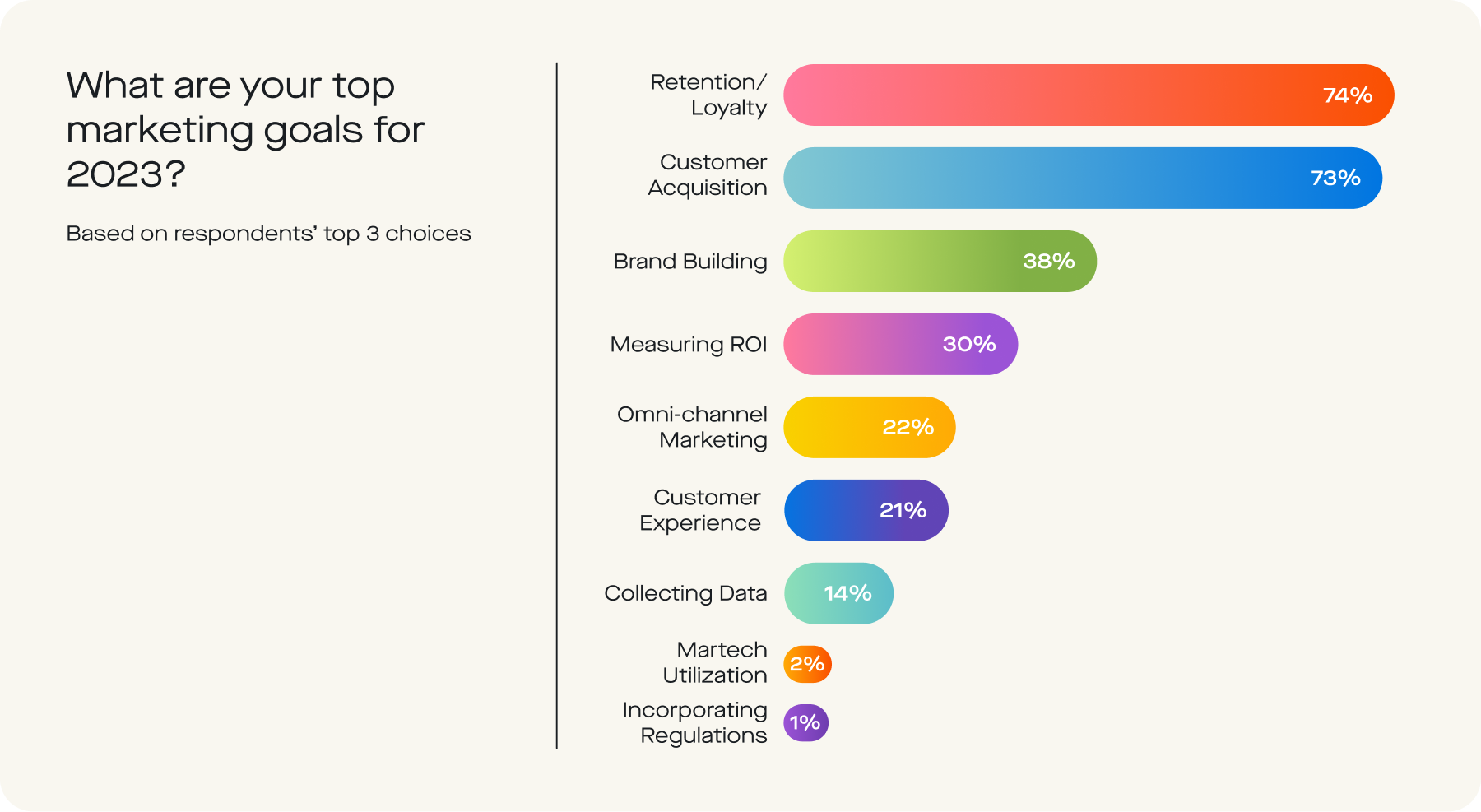
As both a retention and acquisition tool, SMS is a strong channel to help marketers achieve these goals. In fact, 79% of marketers using SMS are leveraging it as a retention channel. SMS offers brands direct, immediate access to the consumer’s primary inbox to keep them coming back.
SMS is also a direct revenue-driving channel. 73% of marketers say SMS drives incremental revenue for their business. And almost one-third of marketers see SMS increasing their average order value, and growing overall customer lifetime value.
With so many ways to grow SMS as a retention channel, now’s the time to understand what good—and great—SMS performance looks like and the actions you can take to get there.
Your welcome message journey is your subscribers’ introduction to your SMS program. This type of message can be used to deliver special offers, give a friendly hello, and establish a relationship with subscribers.
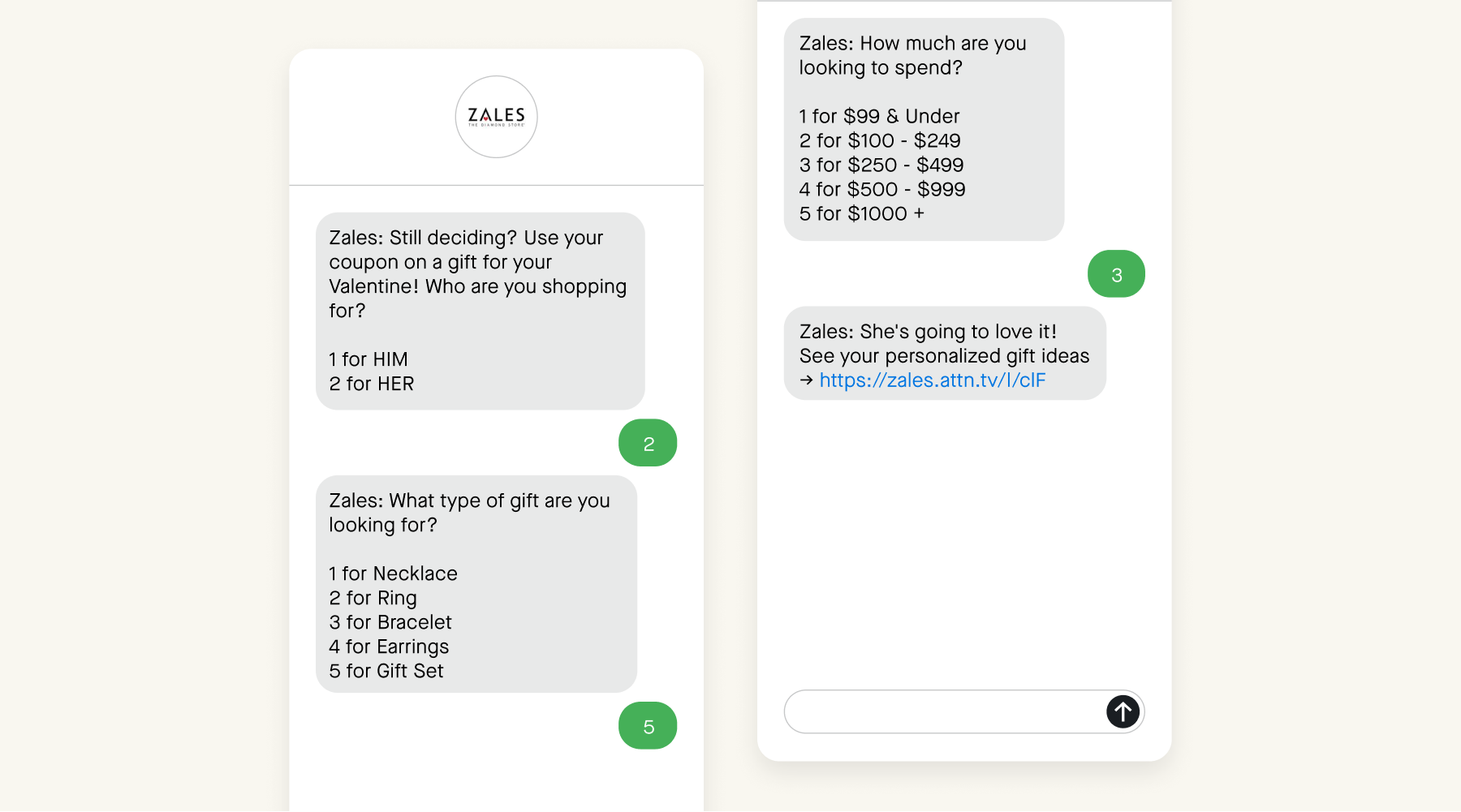
In our analysis, welcome messages consistently have some of the highest variation between median and top performers across verticals. But, this message type also consistently delivers some of the highest revenue per message. It’s worth investing in refining and optimizing your welcome message to maximize performance and subscriber retention (especially because it can have the highest median opt-out rate of all message types).
Here are our tips for optimizing your welcome message:
To go deeper, brands can launch a Two-Way Journeys™ welcome series. This creates an engaging experience from the start and primes subscribers for further conversational experiences. A two-way welcome series is a great opportunity for a brand to collect zero-party data up-front, such as information on subscribers’ interests, product preferences, and more. This information can be used to build segments for targeted campaigns that deliver a more personalized messaging experience and higher ROI.
Triggered messages—like abandoned cart, checkout, and browse reminders—help brands re-engage high-intent shoppers to recoup otherwise lost revenue. For example, brands can use abandoned cart journeys to automatically engage subscribers who have added items to their cart but not completed their purchase. And with browse abandonment journeys, brands can text subscribers who have visited a product page but didn't add any items to their cart.
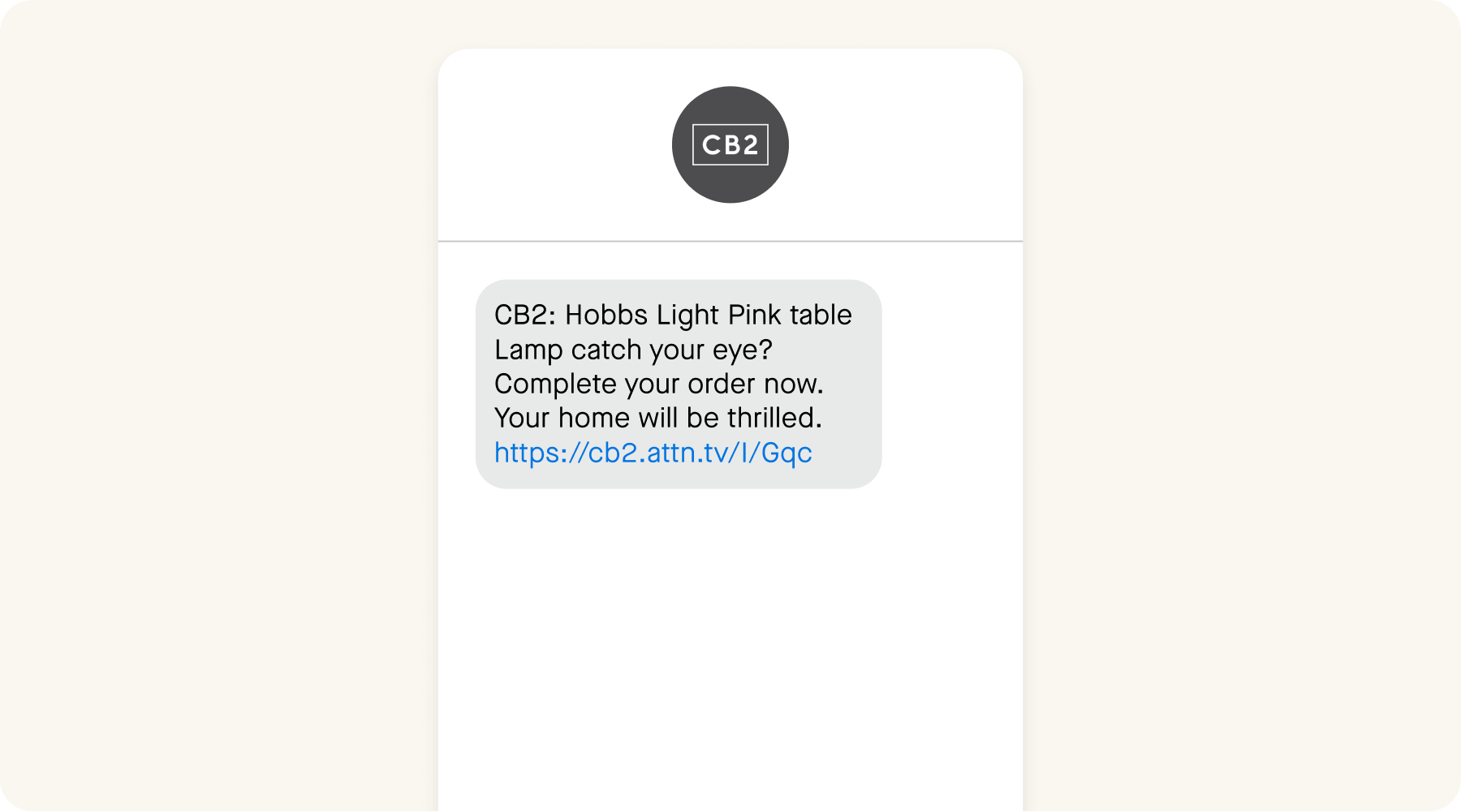
Based on our analysis, these types of triggered journeys are among brands’ highest performing and most adopted across verticals. Abandoned cart and checkout journeys consistently drive the highest click-through rate (CTR), conversion rate (CVR), and revenue per message (RPM). Plus, these journeys have lower opt-out rates, highlighting how useful shoppers find them.
One thing to note: Browse abandonment reminders are consistently high-performers, but they tend to have higher opt-out rates than other triggered messages. You should explore how to send the most effective and timely messages to maximize ROI for your brand. Here are a few other tips:
Conversational triggered messages are a great opportunity for you to find out why a customer abandoned a purchase. Whether using Two-Way Journeys or Attentive Concierge™, conversational messages have high response rates, conversion rates, and RPM. Subscribers are using two-way conversations to resolve their shopping problems (and click “buy”).
And it doesn’t require a ton of manual work on your end. Brands can trigger answers to simple shipping or product questions, like sizing, color, or patterns. With Attentive Concierge™, more nuanced questions are escalated to a live support agent. No matter what type of conversation you’re having, use personalization macros whenever possible to make shoppers feel understood.
Some message types, like price drop journeys—which automatically message subscribers when a product they’ve expressed interest in has a price reduction—are effective at creating a sense of urgency. Low inventory journeys, meanwhile, will automatically message subscribers when a product they've expressed interest in is almost sold out. And back-in-stock messages let subscribers know when a product they’ve expressed an interest in is available again. These journeys are all highly customizable and targeted, so you can control who enters the journey and which products will trigger a message.
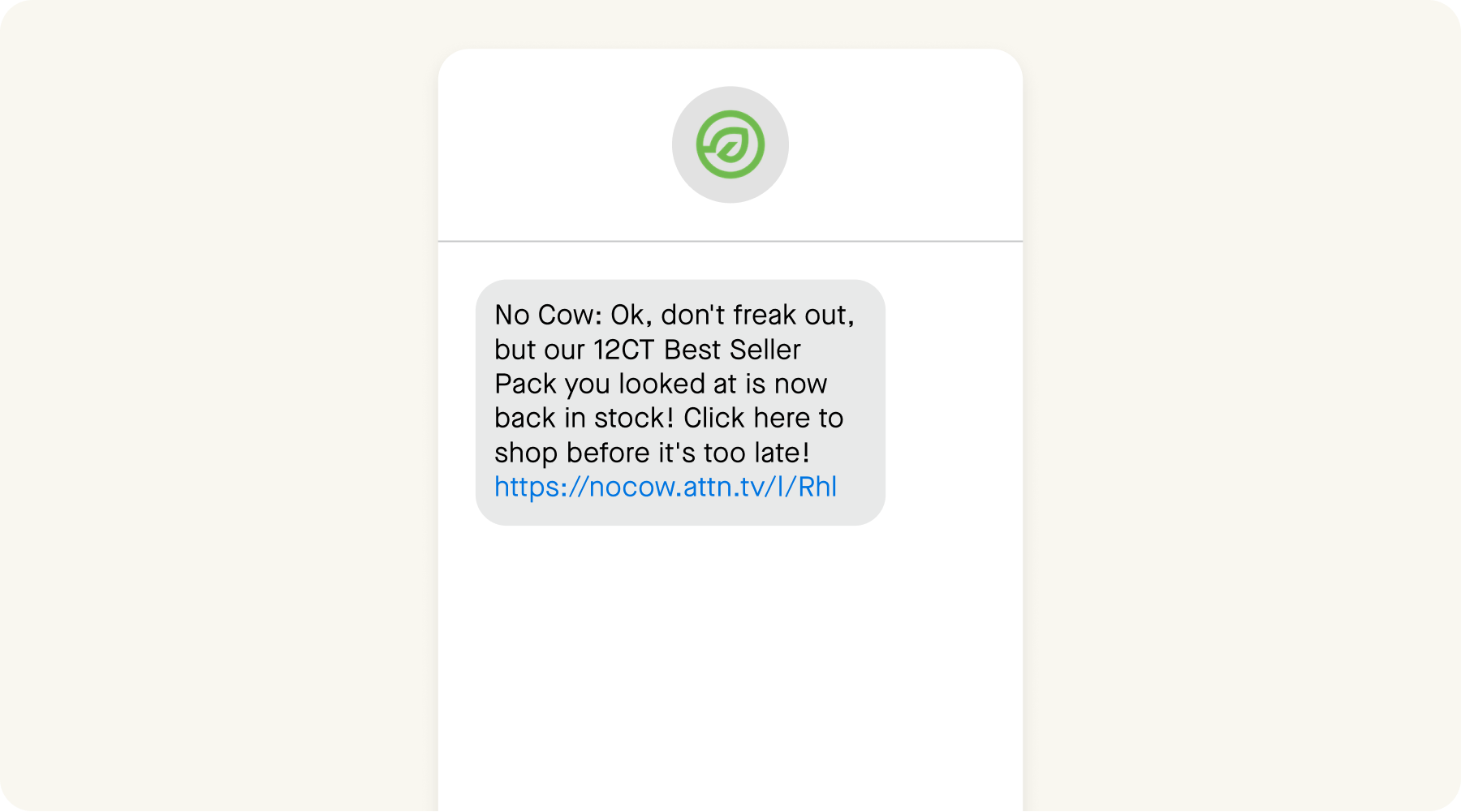
These journeys often have some of the highest click-through rates across message types (like in the children's apparel category, where parents are clearly looking for a good deal). CVR and RPM does tend to be lower for these journeys, but brands can adopt some tactics to maximize ROI:
Campaign messages should be used to send timely offers, like flash sales and limited-time perks. We’ve found that while campaign message conversion rates are often lower than triggered messages across verticals, brands who focus on building an effective segmentation strategy make the most of campaign messages.
In fact, when combined with a timely promotion, segmenting campaign messages can deliver much greater ROI. We suggest starting with segments that include high-intent shoppers who view or add products to their carts but haven’t purchased yet, active and engaged subscribers who often click on message links, or geo-targeted messages (especially those that are weather dependent).
Post-purchase messages help brands keep the conversation going with subscribers after they click “buy.” Our analysis shows that while post-purchase messages may not drive the greatest revenue, they’re a very effective way to drive retention and maintain engagement with some of the highest CTRs.
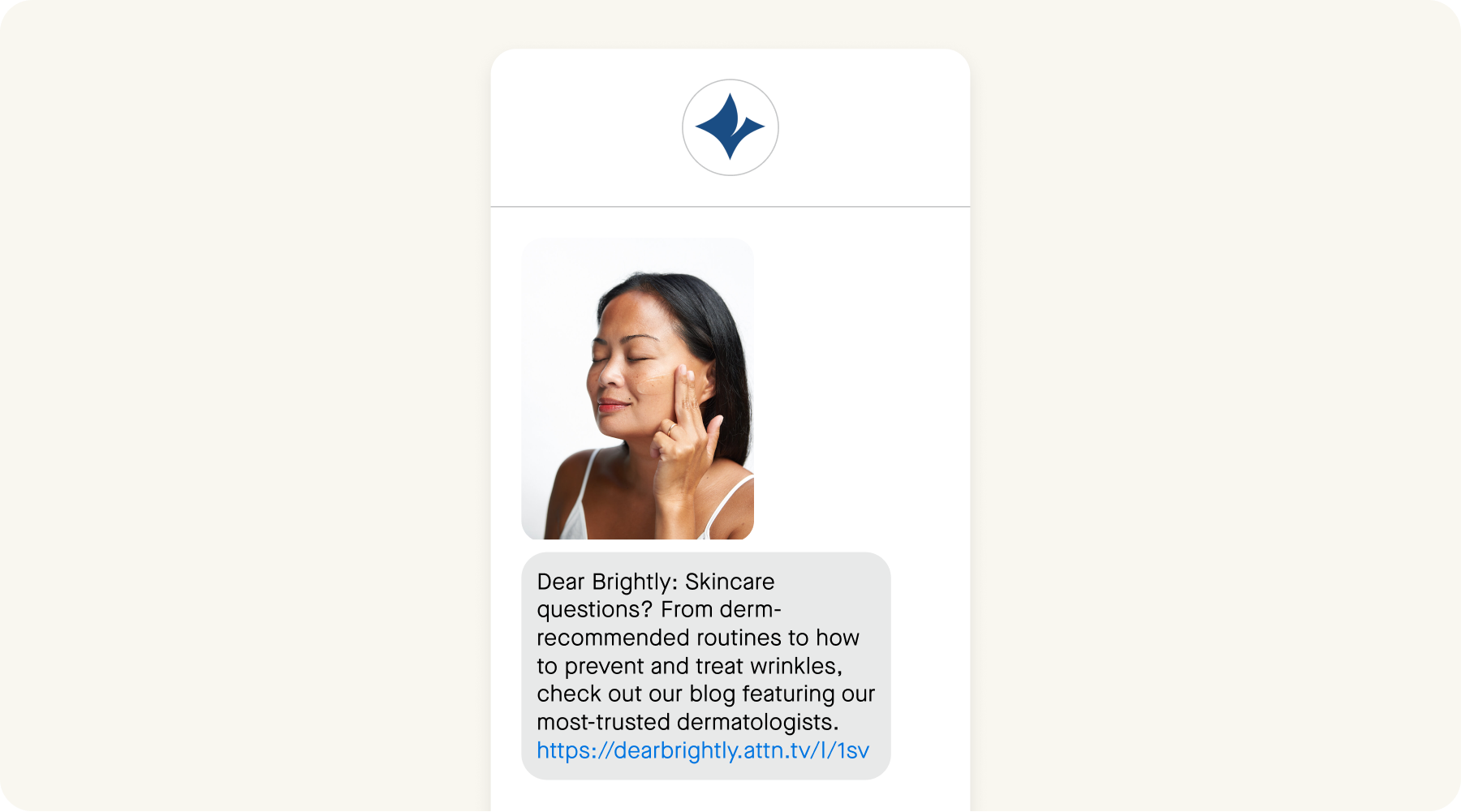
Invest time in coming up with engaging content to reduce unsubscribes and encourage shoppers to make repeat purchases.
Finally, use two-way post-purchase journeys to add triggered replies to your post-purchase experience. You can use them to elevate your customer experience with brand-building and cross-selling content, and collect feedback. And, if you branch your journey based on product data, you can tailor your customer feedback survey or conversational questions based on unique product variants.
Use these insights and benchmarks to guide your SMS strategy and shape where you invest time and resources. But remember—you know your brand better than anyone else. A/B testing message types, variants, offers, and language will help you find the messages that resonate most with your audience.
Go deeper and learn more about specific vertical insights by exploring Attentive’s complete SMS Marketing Benchmarks Report. And check out the complete 2023 Global State of Conversational Commerce Report, including consumer insights and an interactive quiz to discover more great content.